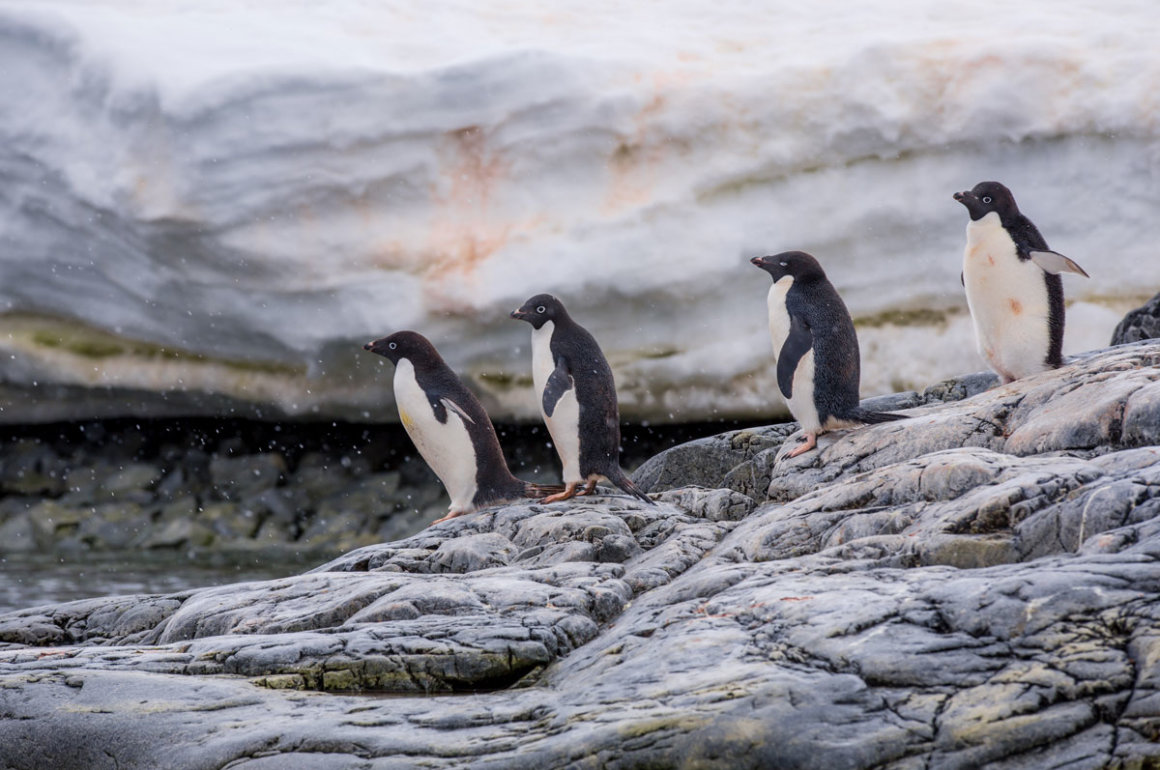
The Great Migration, Tanzania & Kenya
Geoffrey Kent is the founder, chairman, and CEO of Abercrombie & Kent, one of the world’s most respected luxury travel companies. In his first column for LUX, Mr. Kent marvels at nature’s most extraordinary wonders.
From Africa at its rawest to Japan at its most genteel, experiencing these natural phenomena will remind even the most jaded traveller of what a privilege travel is and our place in the world. I have always believed that in nature we are completely unified with all of life…
Sakura, Japan
No season’s arrival is more celebrated than that of spring. People rejoice in shaking off winter’s grip and greeting the season of new life. In Japan, one million cherry trees blossom. Known as sakura, it starts in the south and moves northwards, following a wave of warm weather. Clouds of pink appear as daytime temperatures reach 17 degrees Celsius. As they have been doing for centuries, locals picnic under these trees – a custom known as hanami. In the modern capital Tokyo, people flock to Ueno Park. In the ancient Kyoto, the Philosopher’s Path is an inviting place to relax and reflect on the wonder of nature.

Sakura, Japan
Follow LUX on Instagram: the.official.lux.magazine
In my experience the most rewarding, but often over-looked way to experience Japan – from its timeless mountain villages to its delicate cuisine, distinctive architecture and graceful gardens – is to approach it from the sea. A small expedition yacht provides just the right balance between luxurious on-board amenities and access to remote villages, places that the big cruise ships simply can’t reach. This access illuminates Japan’s history and culture, arts and architecture, gardens and nature, as well as its culinary traditions, with experiences that reveal the country through a local lens.
Each day brings unexpected delights. During one visit to beautiful Kenroku-en Gardens, we were invited into a teahouse to savour delicious ‘fragrant peach’ ice cream.
The Great Migration, Tanzania & Kenya
Every year more than a 1.5 million wildebeest, 200,000 Burchell’s zebra and a smattering of trailing Thomson’s gazelle make a 1,900km odyssey between Tanzania’s Serengeti and the Masai Mara in Kenya. Instinct and the smell of rain spurs the herds forward with two things in mind: food and water. They are following the rains in search of fresh grass. Along the way, many migrating animals fall prey to waiting predators including lion, leopard, cheetah, crocodile and hyena.
Read Next: Britain’s newest literary festival in a house made famous by political scandal
One year when I was on safari with Richard Burton, I was getting him a drink at the bar in the mess tent when I heard a roar and a lot of screaming and turned to see two lions bringing down a buffalo in our campfire. I quickly upended the table, sending the crystal and china flying, and gathered the guests behind it as a barricade. What an amazing spectacle it was to watch! The next day Richard Burton wanted to know if we could do it again. He thought I’d set the whole thing up – nature is full of surprises!
During the Migration, sightings of predators taking down prey are common. Visit Tanzania between January and early March to see thousands of wildebeest being born each day. Then from June through September, vast herds are on the move through Kenya.
The Monarch Butterfly Migration, Mexico
The migration of the Monarch butterflies is one of the most astonishing of all natural wonders. Every autumn, tens of millions of Monarchs travel from the eastern USA and Canada to Mexico’s Sierra Madre Oriental Mountains – their winter hibernation grounds. It’s an epic journey for these creatures in distance and – most intriguingly – they do it without ever having been there before. A butterfly that departs from Canada will never return. Nor will its progeny for the next two generations. It is the third generation that sets off once more from Canada for the same twelve mountains… 5,500 kilometres away. An amazing natural mystery.
The March of the Penguins, Antarctica
For those dreaming of genuine adventure, Antarctica is nature’s last frontier. This pristine landscape of mountains and glaciers remains largely untouched by civilization and wildlife abounds.
One of the most inspiring is the Emperor Penguin colony in Atka Bay along the Weddell Sea coast of Antarctica. The penguins breed on the sea-ice in bitterly cold conditions. Once an egg is laid, the female leaves the colony, giving the egg to her partner, who carefully puts it on top of his feet and covers it with a skin fold to keep the egg warm – even when the temperature drops below −35°C.
The mother will return in July when the chick is ready to hatch. They are very small, weighing only about 150–200g (adult penguins weigh 22-30kg at this time of year). They have a thin layer of down and are not yet able to regulate their own body temperature, so it is up to the parents to keep the chicks warm.

The March of the Penguins, Antarctica
By September, the chicks have grown a thick cover of down and are developing quite rapidly. Growing requires a lot of energy so they are always hungry. It now takes both parents to go out and gather food for the youngsters. At night, the little ones left in the colony form huddles to keep warm.
In December – when we visit the colony – the chicks are nearly as big as their parents. Small black patches appear on their flippers. They are beginning to grow real feathers and they start shedding their down.
Warmer temperatures cause the ice to break up, bringing open water closer to the nesting site. The chicks are now old enough to swim and fish, and we watch enthralled as they begin to take to the ocean themselves.






Recent Comments